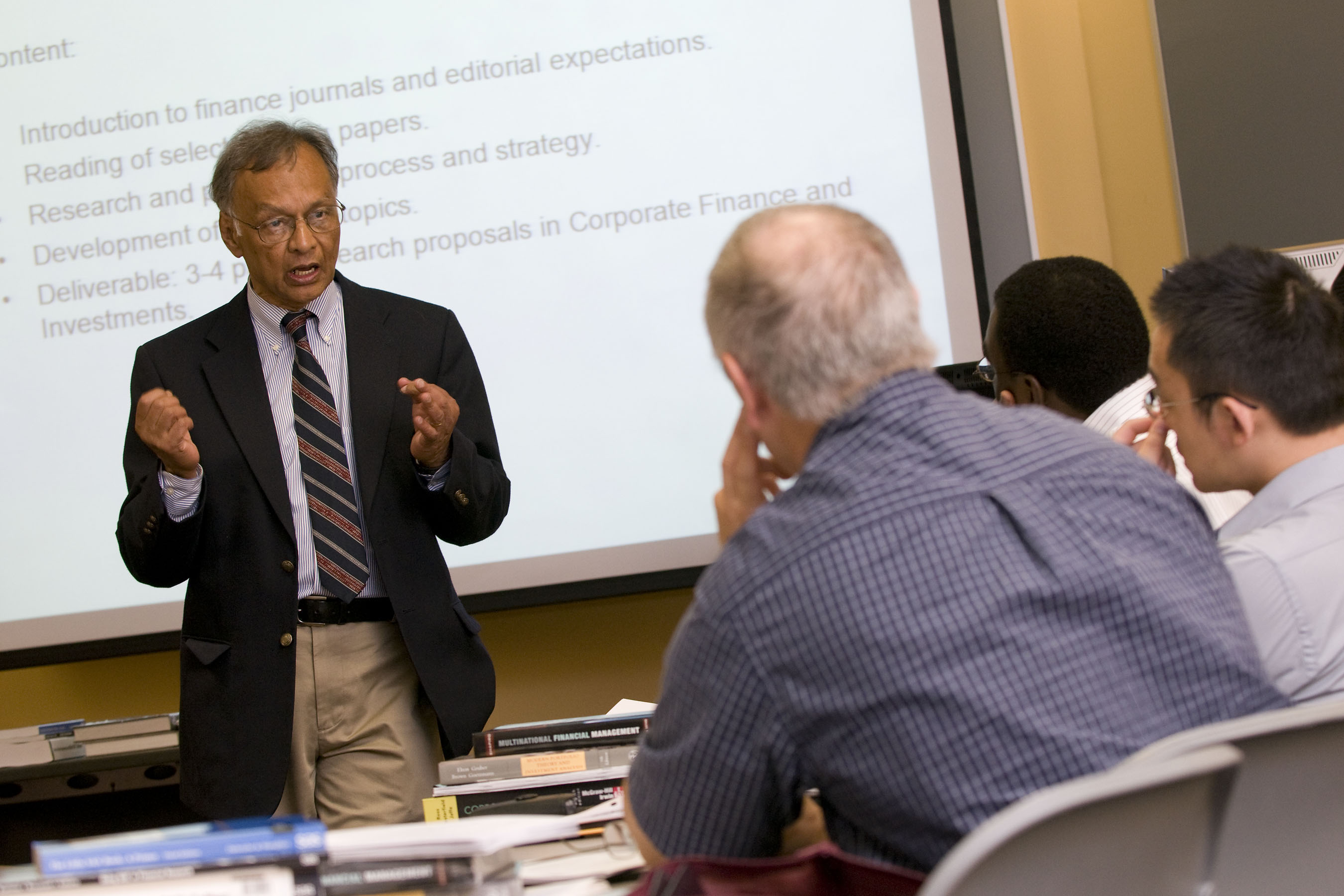New classes begin in innovative Pamplin College program to ease national faculty shortage

A group of seven faculty members began classes this week in an innovative post-doctoral program launched in 2008 by Virginia Tech's Pamplin College of Business to help alleviate the critical national shortage of business-school faculty.
The Pamplin College is among four U.S. business schools that have launched “bridge-to-business” programs to prepare individuals with Ph.D.s in non-business, but related, disciplines for new careers as business faculty members. The programs are approved by AACSB International (Association to Advance Collegiate Schools of Business), the accrediting organization for business schools worldwide.
Pamplin's bridge-to-business program runs for eight weeks (June 1-July 31) and currently offers three tracks: finance — for those with doctorates in economics — marketing, and management, both of which are aimed at individuals with doctorates in psychology, sociology, statistics, and other related disciplines.
Of the seven participants, four are enrolled in the finance track, two are in management, and one is in marketing. The participants hold doctorates from the University of Alabama; University of California, Los Angeles; Howard University; National Tsing Hua University in Taiwan; and Virginia Tech. They are, with one exception, faculty members at Virginia State University, Sweet Briar College, Elizabeth City State University, University Hospitals Case Medical Center, and the U.S. Army Management Staff College. The non-faculty participant is employed at the Swiss Reinsurance Company.
Pamplin's bridge program is aimed at individuals who demonstrate the potential to secure a tenure-track faculty position in their new field of choice, said Frank Smith, Pamplin's management and professional development director. He noted that 15 of the 20 graduates of the two previous programs have secured new full-time or part-time business positions.
Leading the introductory seminar, Pamplin Dean Richard E. Sorensen discussed the post-doctoral bridge concept; AACSB's role in business education; the role of teaching, research, and service in a business school; and its organization and promotion and tenure processes.
Sorensen, who chaired AACSB’s working group on the doctoral faculty shortage, says there are about 1,000 job openings for Ph.D.-holding faculty at more than 500 AACSB-member schools in the United States. Solving the doctoral shortage problem, he adds, is particularly difficult at a time of budget cuts and general economic uncertainty.
"The shortage of academically qualified faculty is projected to increase to 2,400 openings by 2012." The reasons for the faculty shortage, he says, include the 5 percent decrease in business doctorates earned worldwide. According to AACSB, 5,872 doctorates were earned in the 1995-99 period, compared with 5,611 in the 2000-05 period.
Other supply-related reasons are competing employment offers from government agencies and industry; the fact that about half the doctoral graduates from U.S. institutions are foreign students, many of whom subsequently return home; and the retirements of existing faculty members. Meanwhile, on the demand side, demand for faculty has risen, driven by significant increases in business-student enrollments.
To apply to Pamplin's post-doctoral bridge program, contact Frank Smith (mailto:fmsmith@vt.edu) at (540) 231-4972.


